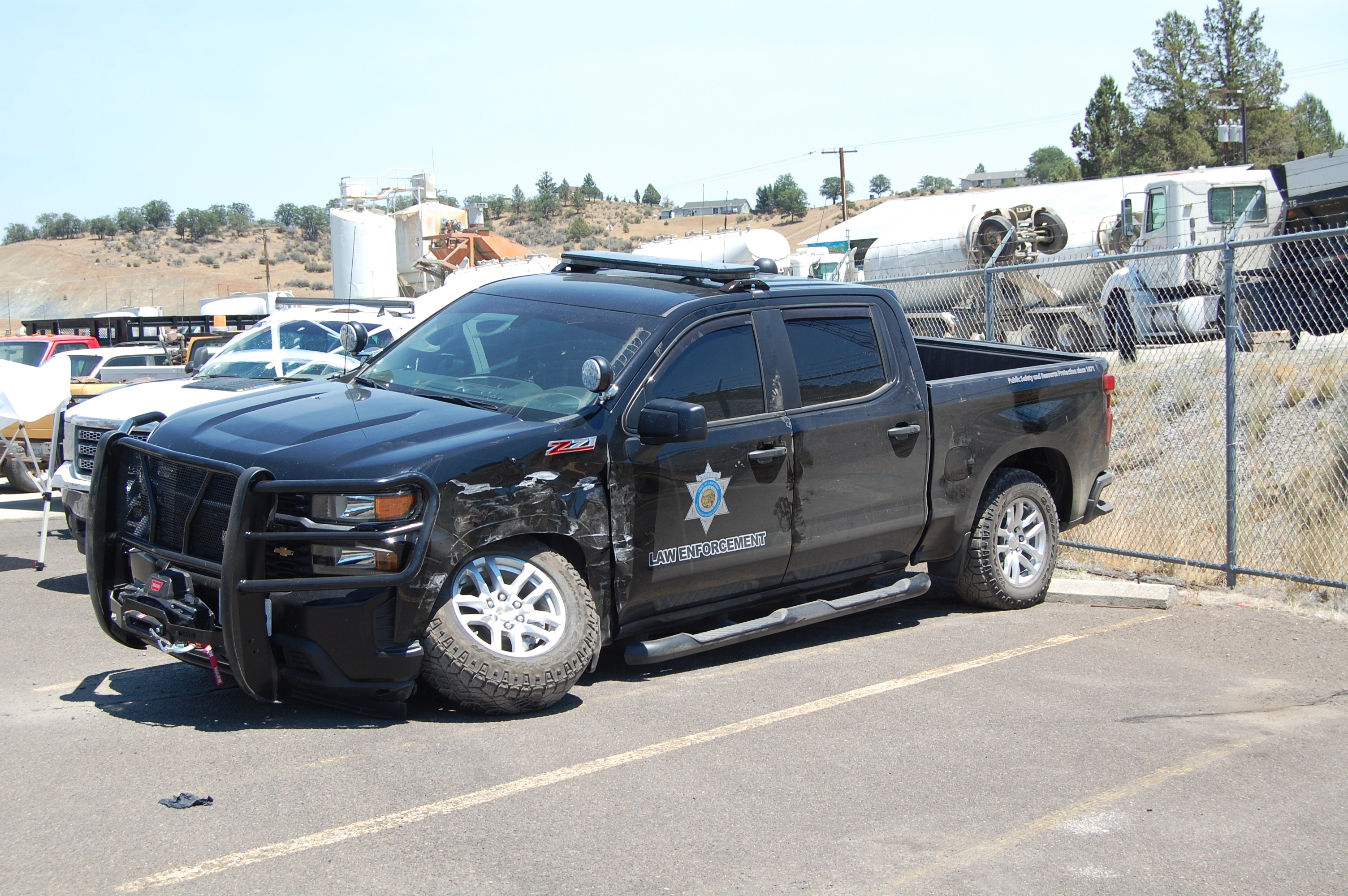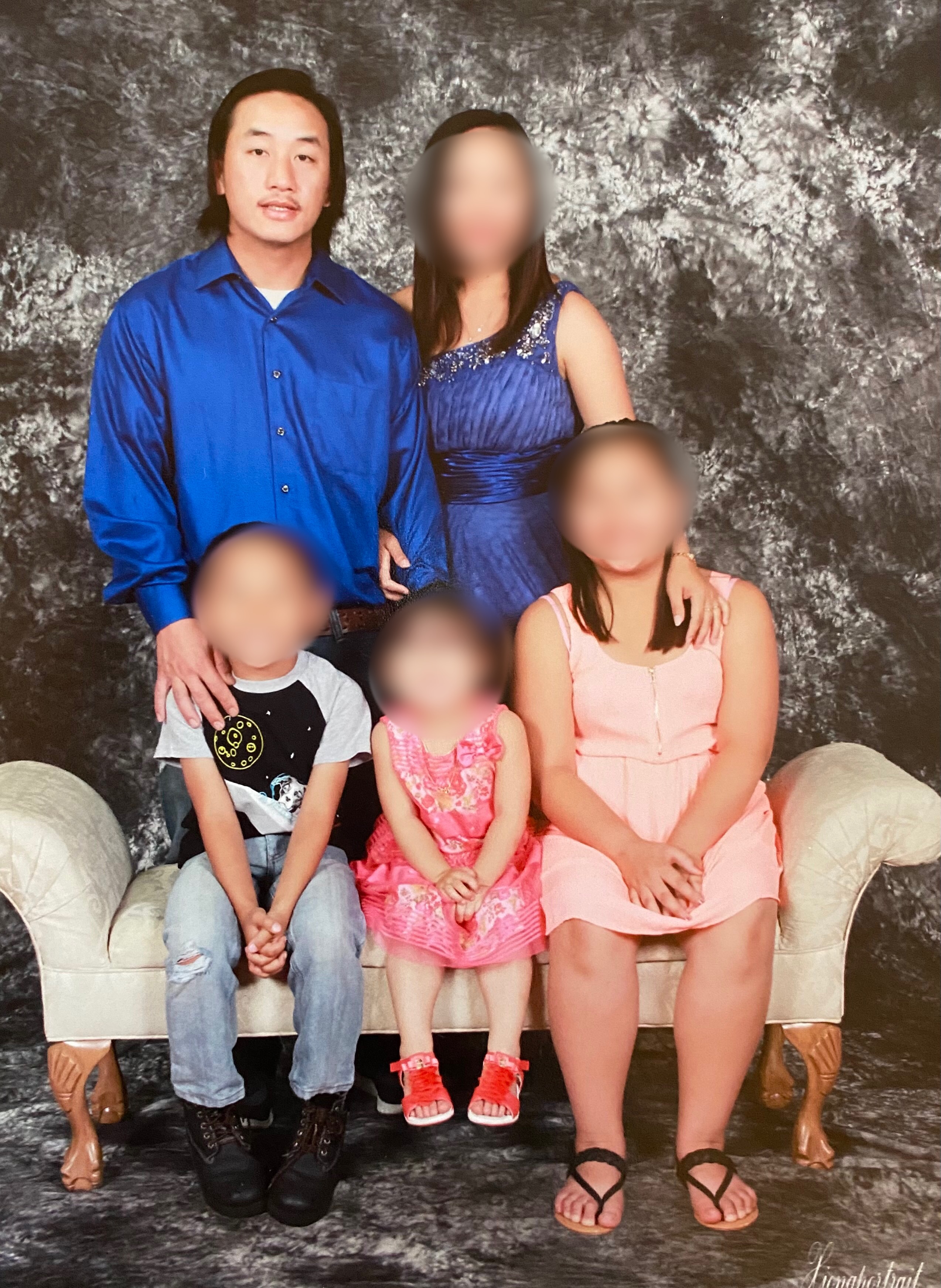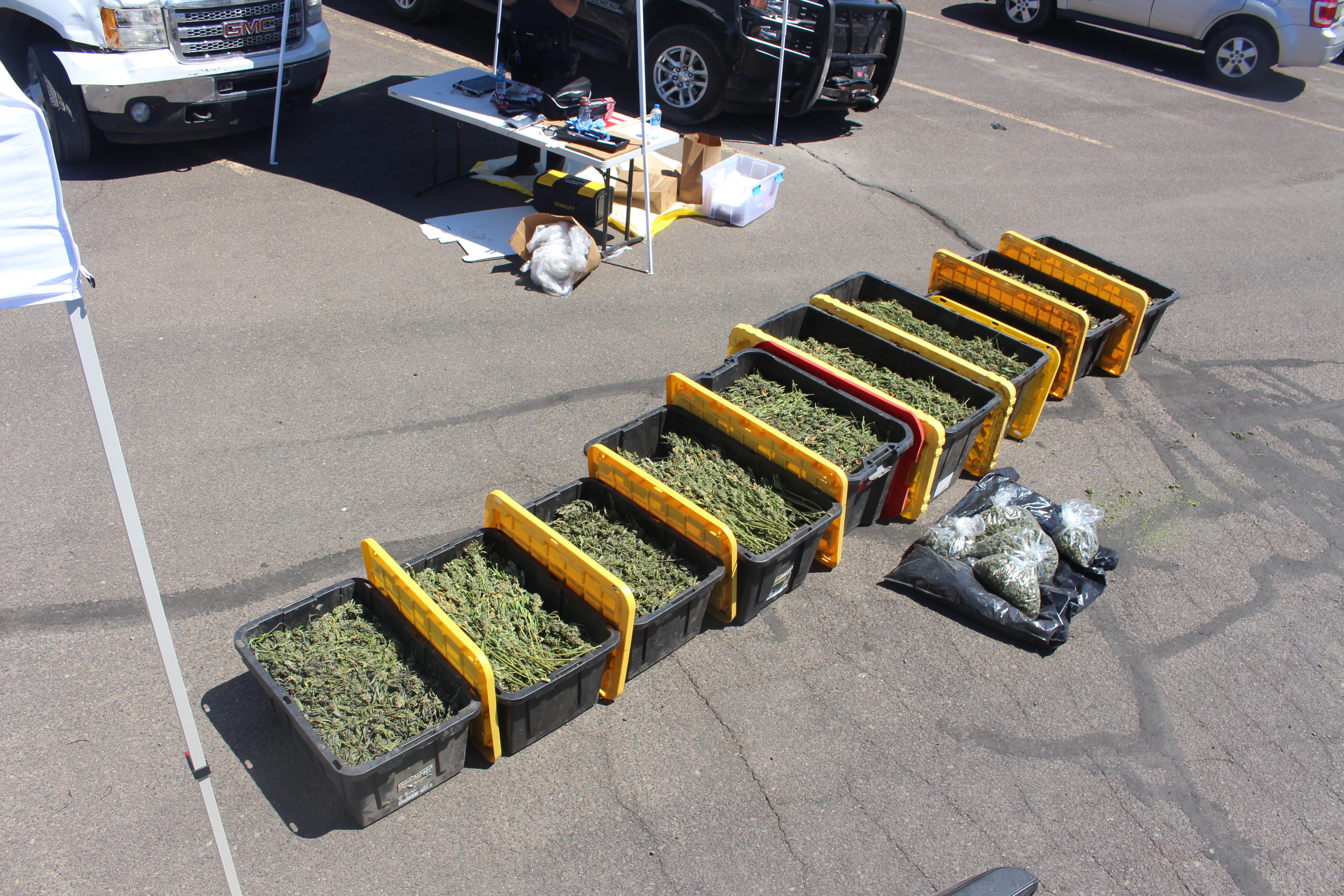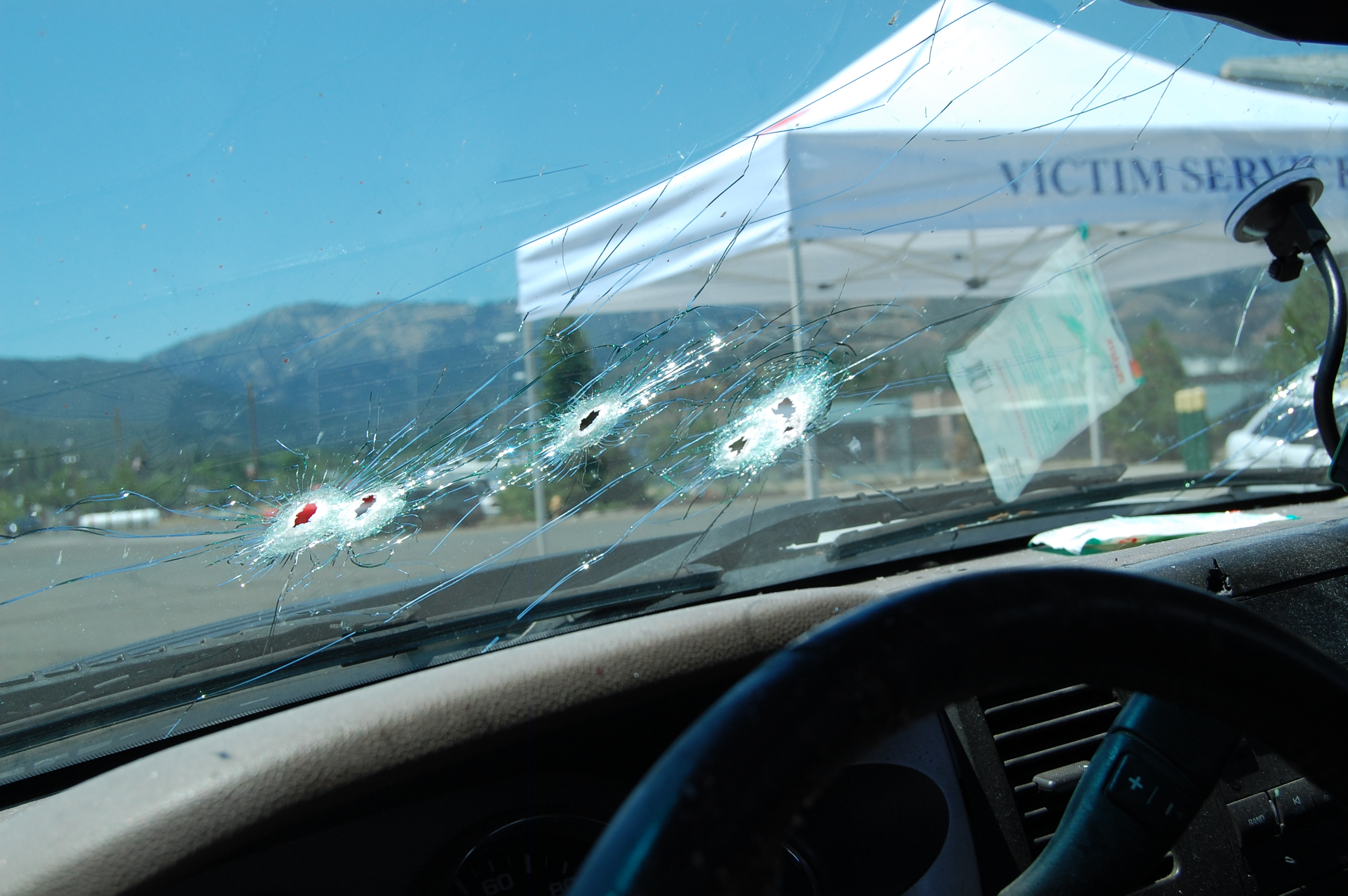Cops Who Shot Hmong Man Fleeing Wildfire With Family Won’t Be Charged
Credit to Author: Keegan Hamilton| Date: Mon, 27 Jun 2022 14:27:41 GMT
It was around 8:30 p.m. one evening last June, with a thick haze from a massive 1,400-acre wildfire blotting out the summer twilight sky, when a routine evacuation effort in Siskiyou County, in rural Northern California, suddenly turned into a police shooting that left a 35-year-old father of three dead in his pickup truck.
A year later, smoke from the blaze known as the Lava Fire has long since cleared. But questions remain about whether the cops were justified in opening fire that evening, and whether Sobleej Kaub Hawj’s death could have been avoided had county authorities not been waging a scorched earth campaign to drive out illegal cannabis farmers from the ethnic Hmong community.
On June 14, Siskiyou County District Attorney Kirk Andrus announced that four officers who killed Hawj, a Hmong man from Kansas City, Kansas, who was in Siskiyou County with his family, would not face criminal charges.
Andrus released a nine-page letter sent to the heads of three law enforcement agencies whose officers were responsible for the shooting. The killing was within the law, Andrus said, because officers felt Hawj was “lunging” at them with his GMC pickup truck after making a wrong turn at a checkpoint set up during the wildfire evacuation. Hawj aimed a .45-caliber pistol at the officers, Andrus said, and a spent shell casing found inside his truck’s cab indicates Hawj fired at least once. Toxicology results show Hawj had amphetamines, including meth, in his system, according to the DA, and a search of Hawj’s vehicle revealed that he was hauling a 132-pound load of weed, along with two assault rifles and another handgun.
One officer’s decision to open fire was “perfectly appropriate, even in hindsight,” Andrus wrote, “and it is entirely possible that his quick action to fire on Hawj saved lives.”

A week after Andrus’ report, The Sacramento Bee newspaper published police dashboard and bodycam footage obtained through public records requests, partially capturing the shooting and its chaotic aftermath. The videos show officers handcuffing Hawj while he was critically wounded from the shooting; officers searching for a colleague who fired shots at Hawj and then apparently left the scene without authorization; and officers aggressively confronting other Hmong drivers during the evacuation, pointing weapons at them, and creating tense encounters as people fled their homes seeking safety from the wildfire.
Members of Siskiyou County’s Hmong community and attorneys for Hawj’s surviving family—his 34-year-old wife and three children, who were in a separate vehicle behind Hawj and witnessed the shooting—remain deeply skeptical of the DA’s findings.
Nancy Ly, an attorney for the Hawj family, told VICE News they are considering a civil lawsuit and conducting their own investigation, including an independent autopsy.
“Even if allegations are true about the meth in his system and marijuana in his car, it doesn't justify the shooting,” Ly said. “We expected the DA’s report would be self-serving. We knew that coming in, based on the history [in Siskiyou County], the non-trust, and the rhetoric before the shooting. We weren’t surprised.”
In the months leading up to the Lava Fire and Hawj’s shooting, relations between Siskiyou County authorities and the local Hmong community had already hit a breaking point, with a civil lawsuit alleging a pattern of discriminatory policing and anti-Asian legislation.

Hmong people, mostly first- and second-generation refugees from Southeast Asia whose families supported the United States during the Vietnam war, flocked to predominantly white and conservative Siskiyou County in recent years. Many settled in an area called Mount Shasta Vista, a rugged patch of high desert with cheap land and limited access to electricity and groundwater. Greenhouses full of cannabis plants sprang up around tumbledown homes, drawing the ire of county officials who banned commercial cannabis cultivation.
Siskiyou leaders passed ordinances aimed at blocking tanker trucks full of non-potable water from entering Mount Shasta Vista, partly on the grounds that water was being wasted on illicit weed crops during a drought. Hmong people say sheriff’s deputies harassed them and pulled them over—allegations the sheriff has disputed. The sheriff’s office routinely raids illegal grow sites, demolishing greenhouses with bulldozers and chainsaws and destroying the crops.

A group of Hmong residents sued the county, arguing the policies were racist and caused dire living conditions, including for some elderly people who lacked water. The Hmong plaintiffs eventually won a preliminary injunction in federal court blocking enforcement of the water laws, but animosity between the community and county authorities continued to fester.
Against that tense backdrop, the Lava Fire erupted. Hawj, according to his family’s attorneys, was visiting Mount Shasta Vista with his family and had only arrived in the area a few days before. The wildfire was quickly spreading across parts of Siskiyou County, and state and county officials ordered evacuations of areas under threat.
Andrus noted in his charging decision that law enforcement officers coordinating the evacuation on the night of June 28, 2021, were well aware that Mount Shasta Vista “was known to be home to many individuals involved with the illicit cultivation of marijuana,” but said they “made no efforts to stop or search any resident as they left the area.”
Around 8:30 p.m, Andrus wrote, officers stationed on a highway at the entrance to Mount Shasta Vista saw a convoy of 14 vehicles coming toward them. The first eight or nine vehicles followed police orders to make a left turn onto the highway. Then came Hawj, driving his white GMC truck with dual rear tires. Instead of making a left as instructed, the DA wrote, Hawj tried to turn right, which would have taken him into an area threatened by fire.
One officer on the scene, identified as Tony Stacher from the police department in the nearby town of Etna, told investigators he threw up his hands, yelling “stop, stop, stop!” Stacher said he made eye contact with Hawj, who continued to drive toward him, getting close enough that the officer could touch the truck. Another officer described Hawj’s truck as “lunging” by “alternately braking and accelerating.” Stacher, the DA wrote, “kicked the truck’s front bumper and slapped his hand down on the hood to get Hawj’s attention.”
Stacher, according to the DA’s report, saw Hawj raise his hands in a questioning motion he described as “what the fuck?!” He then saw Hawj look toward the passenger seat and “with his right hand pull this pistol out and all I see is a .45 barrel… with the darkest hole I've ever seen in my life pointing directly at me.”
Stacher, the DA wrote, thought he yelled, “holy shit!” Other officers heard a yell of “gun!”
As Stacher drew his own firearm and began moving to his right, he said, Hawj kept the gun pointed at him. Stacher was “almost certain that Hawj fired at him,” Andrus reported, but it’s still unclear who actually shot first. The officers’ body-worn cameras were not activated, and there’s no known video footage that shows the moment when the shooting started.
Stacher “steeled himself to prepare for the impact of a slug from Hawj’s gun,” the DA wrote, and “gritted his teeth so hard that he later found that he had chipped a tooth.” Stacher then opened fire on Hawj, as did detective Levi Machado from the Siskiyou County Sheriff’s Department.
After the first shots were fired, Hawj’s truck “accelerated rapidly forward and to the right.” A police dashcam video recorded from a distance shows Hawj’s truck slamming into a police vehicle, spinning its tires, and kicking up a cloud of dust.
Andrus noted it’s “entirely possible” that Hawj was already severely wounded and not in control of his vehicle, but the cops felt Hawj was trying to run them over and started shooting again, with two more officers on the scene firing their weapons in addition to Stacher and Machado.
The first sheriff’s deputy to approach Hawj said, “I could see the suspect sitting in the driver's seat. I saw both his hands were near his lap and a pistol sitting on his lap.” Hawj’s right hand was still moving, the officer said—he was still alive.
The bodycam video footage released by The Sacramento Bee shows cops pointing weapons at Hawj, pulling his bloodied body from the driver’s seat, and moving him onto the ground.
“He’s breathing,” one officer said. “Roll him over and cuff him up.”
“How dumb was he?” another officer says. “He shot here and then fucking floored it and tried to ram us.”
Hawj died on the scene. According to Andrus’ report, he sustained three “devastating gunshot wounds to the head,” and was also shot several times on both sides of his upper and lower body. A photo released by the DA shows Hawj’s white pickup riddled with bullet holes.
In addition to a blood-soaked Colt 1911 Combat Commander .45 handgun recovered from Hawj’s lap, police searched his truck and found an AR-15 style rifle with 24 rounds of ammo loaded into a 50-round drum magazine and fitted with a homemade silencer. There was also an AK-47 style rifle with a fully-loaded 30 round magazine, Andrus said, and a 9mm handgun in a backpack in the back seat loaded with 16 rounds. In the truck’s bed, police found plastic bins filled with 132 pounds of cannabis valued by police at up to $175,000.
Hawj had a warrant out for his arrest on cannabis trafficking and weapons charges in Colorado, according to the DA, though the cops who shot him had no way of knowing that at the time.
Andrus wrote that Hawj was among the last wave of people to evacuate from Mount Shasta Vista and “clearly remained in order to collect a valuable, partially processed marijuana crop.” Hawj “may have had the misapprehension that residents were being funneled into an area where they would be searched for marijuana,” the DA said.
The DA concluded the shooting by police “was justified and reasonably necessary to protect themselves and their fellow officers from the imminent danger and likelihood of great bodily injury or death.”
Not mentioned in the DA’s report is the fact that Hawj’s wife and children were in the vehicle directly behind him when the police opened fire. They were not interviewed as part of the investigation, Andrus told VICE News, because they “would not have had the vantage point to see anything relevant to the instant events of the shooting.”
Andrus also said the Hawj family’s attorneys presented “a list of demands that made the interview process unwieldy, overly burdensome, and unlikely to be fruitful.”
Ly, the family’s attorney, said a lawyer who was initially (but no longer) on the case was responsible for early interactions with the DA, and that since she and her co-counsels took over, “we never received any request to speak with the family” as part of the investigation.
As for the DA’s claim that Hawj’s wife didn’t have a good view of what transpired, Ly said, “That doesn’t make sense to us.”
Ly said Hawj’s widow is still grieving, and reading the DA’s report and viewing the video footage from the shooting has been difficult for her.
“She was devastated, she was sobbing, she was crying,” Ly said. “She could barely watch but felt like she owed it for her husband to watch. It was really heartbreaking.”
Other members of the Hmong community reacted with a mix of disappointment and resignation to the news that the officers who shot Hawj would not be charged.
“The DA should have done a better job,” said Peter Thao, a community advocate. “What they have done is just allowing and giving the community a distrust between the citizens and the department. And it’s too late right now for them to retroactively repeat everything. Time has gone by, it’s been over a year.”
Another member of Siskiyou County’s Hmong community, who asked to remain anonymous because of fears of retaliation from law enforcement, said they and others are unwilling to take the DA’s findings at face value.
“It’s the DA just taking sides with the sheriff’s deputies instead of other witnesses,” the person said. “It’s whatever the deputies say goes, pretty much. They lie to cover themselves. It’s hard to trust anything they say.”
The video footage made public so far from the aftermath of the shooting offers a candid view of how law enforcement agents in Siskiyou County interacted with members of the Hmong community during the evacuation. Officers can be seen approaching vehicles with weapons at the ready, barking commands.
“Let me see your hands!” one officer shouts while approaching a vehicle. He then asks, “Any weapons in the car? Guns? Knives? Bazookas?”

In another interaction, a woman driving a truck with a trailer struggles to turn the vehicle around on an unpaved road.
“You’re going to kill somebody,” an officer yells. “Pull your head out and do right. I see you in here again, I’m going to arrest you.”
Officers can also be heard commenting on vehicles towing trailers, suggesting they are loaded with cannabis.
“Friggin’ thousand pounds of dope,” one officer says.
“Of course,” another agrees. “Totally worth dying for.”
A data analysis conducted as part of the Hmong community’s lawsuit against Siskiyou County found that Asian people were far more likely than whites to be targeted by law enforcement.
Despite comprising less than 3 percent of Siskiyou County’s voting-age population, the analysis found that Asians were involved in more than 27 percent of traffic stops, 61 percent of criminal referrals for water-related ordinances, 78 percent of cannabis cultivation citations, and 81 percent of liens the county has pursued for unpermitted structures and other property issues.
“In comparison,” the analysis concluded, “white people are significantly underrepresented in the County’s enforcement of its ordinances and related laws” despite accounting for over 76 percent of the adult population.
Allison Margolin, an attorney who represents the Hmong plaintiffs, told VICE News the DA’s letter used language that she characterized as “a code phrase for dirty, unwanted Asians doing illegal activities,” such as references to illegal weed cultivation and unpermitted structures in Mount Shasta Vista. It was, she said, reflective of the overall tone of the discourse in Siskiyou County, which set the stage for Hawj’s shooting.
“I know that Facebook posts on the County’s page at the time of the Lava Fire talked about burning out the community and that tensions were high,” Margolin said. “Had the law enforcement truly wanted to protect the community, they would not have exacerbated and escalated what started as a vehicle code violation into a homicide.”
Follow Keegan Hamilton on Twitter.